Undisturbed soil core samples are taken to determine many basic soil physical properties. The relative volumes of the solid, liquid and gaseous phases can be determined either by mass or by volume. The soil in the undisturbed sample is preserved in its natural structure. Stainless steel rings of a known volume, provided with a cutting edge on their bottom side are used for taking undisturbed core samples.
Watch the video to see how to take an undisturbed soil sample.
Materials and tools
Metal rings (e.g. 100 cm3, stainless steel) with cover lids, sampling head, hammer, knife, plastic bags, rubber band, marker pen, notepad, pens, wash cloth, solid box for transport of samples, mobile balance (for actual water content determination). The tare masses of sampling rings should be determined in advance.
Important notes
- As far as possible the place intended for sampling should be in its natural state. This means that we do not step on it, because this would affect the soil bulk density.
- Soil core samples should be taken in appropriate moisture conditions. Too wet or too dry soil at sampling can lead to erroneous values.
- Make sure that you do not affect the sampled soil much during the sampling. If possible, do not use the hammer but push the sampling ring into the soil by hand.
- Carefully remove of the ring with the soil sample from the soil. Then cut the excessive soil with a sharp knife, and proceeding from the centre of the ring towards the edges peel the soil off gently.
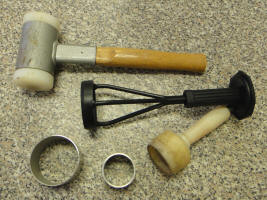
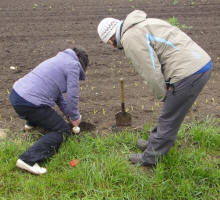

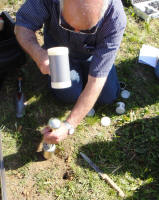
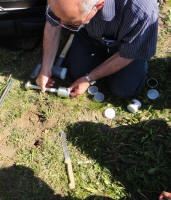
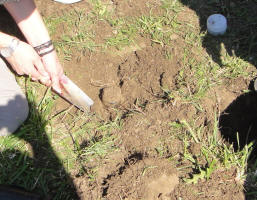


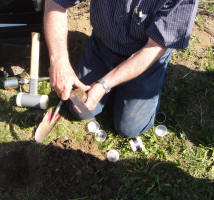
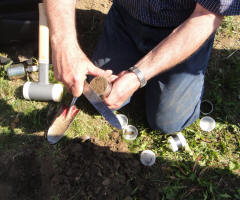
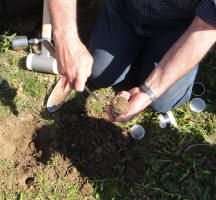
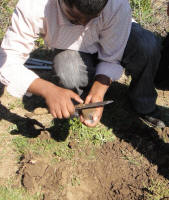
- When several undisturbed samples are taken in close vicinity to each other, all rings are pushed into the soil first and removed later together.
- At least 4 or 5 soil core samples should be taken from the same spot to ensure representativeness.
- If any of the soil drops out from inside the ring or there is a large stone in the ring, the sampling has to be repeated.

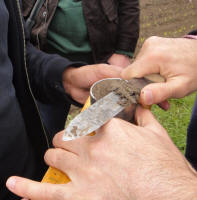
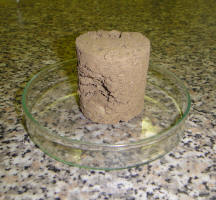
- For determination of water content, put the soil sample on the scales as soon as possible to avoid losses due to evaporation.
- After that the soil sample can be taken into the laboratory. The samples should be transported in their natural vertical position.
- In the laboratory, the samples are left to saturate by being placed on a wet mat to determine the saturated water content. Other soil-water characteristics can be determined by analysing the undisturbed soil sample. At the end of the procedure, the soil sample is dried at 105 °C (mineral soils) or at 60 °C (organic soils) until constant weight is achieved (about 24 hours). Then the soil water contents and dry bulk density can be calculated. For the total porosity calculation, it is also necessary to determine the particle density, for example by the pycnometer method.
Example of calculation
An undisturbed soil sample was taken by using a 100 cm3 sampling ring in the field at Suchdol. The tare mass of the sampling ring was determined in advance. The sample was immediately weighted for actual soil water content determination. In the laboratory it was put on the saturation mat to determine the saturated water content and then dried out. The particle density was determined from the dried sample by the water pycnometer method. The following values were acquired:
Total mass of undisturbed soil sample taken in the field (naturally wet soil with the sampling ring) | 333.20 g |
Mass of soil sample saturated on the saturation mat (with the ring) | 337.82 g |
Mass of dry soil sample (drying temperature 105°C) (with the ring) | 299.59 g |
Mass of sampling ring alone (tare) | 121.14 g |
Soil particle density | 2.62 g cm-3 |
The following soil characteristics were calculated from these values:
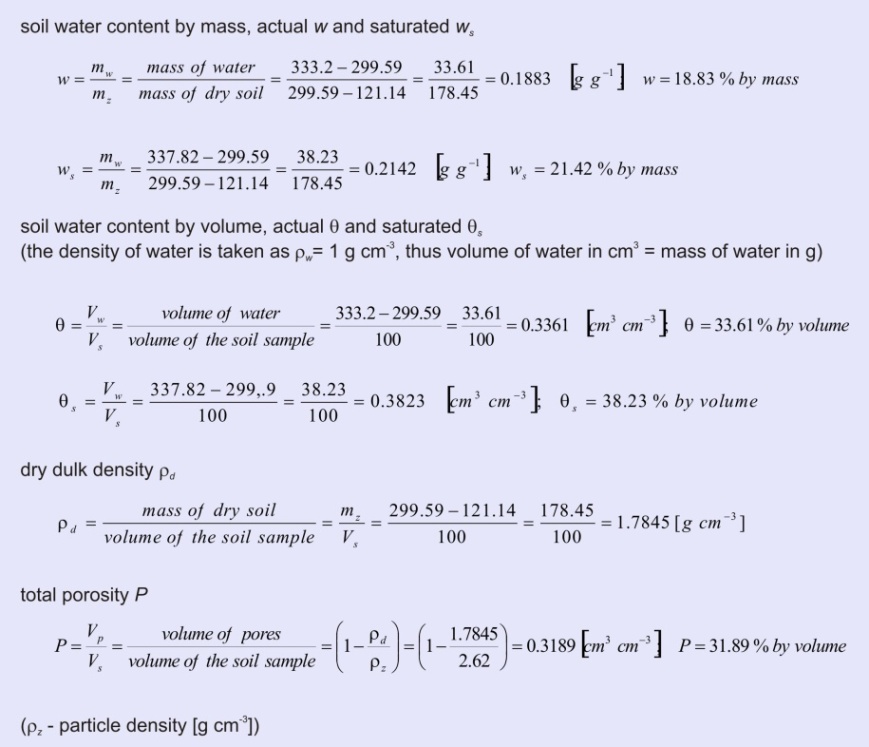
References
Dirksen, Ch. (1999) Soil physics measurements. GeoEcology paperback. Catena Verlag, Reiskirchen, Germany. 154 pp. ISBN 3-923381-43-3.
Hillel, D. (1998) Environmental Soil Physics. Academic Press. San Diego, USA. p. 771. ISBN 0-12-348-525-8.
Kutílek, M., Nielsen, D. (1994) Soil Hydrology. GeoEcology Textbook. Catena Verlag, Cremlingen-Destedt, Germany. 370 pp. ISBN 3-923381-26-3










